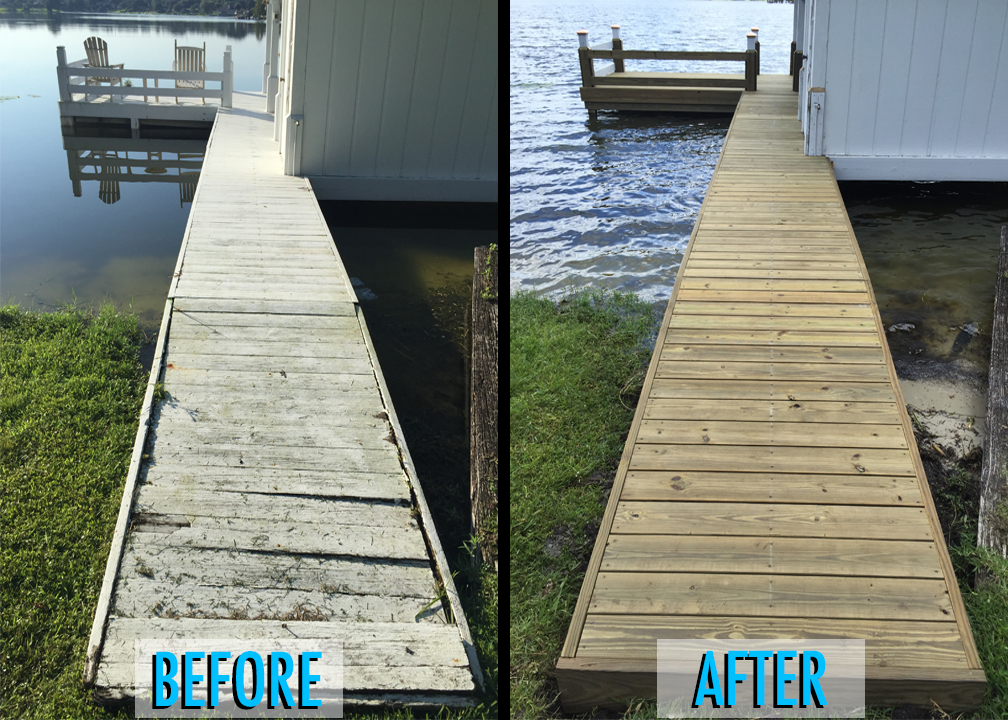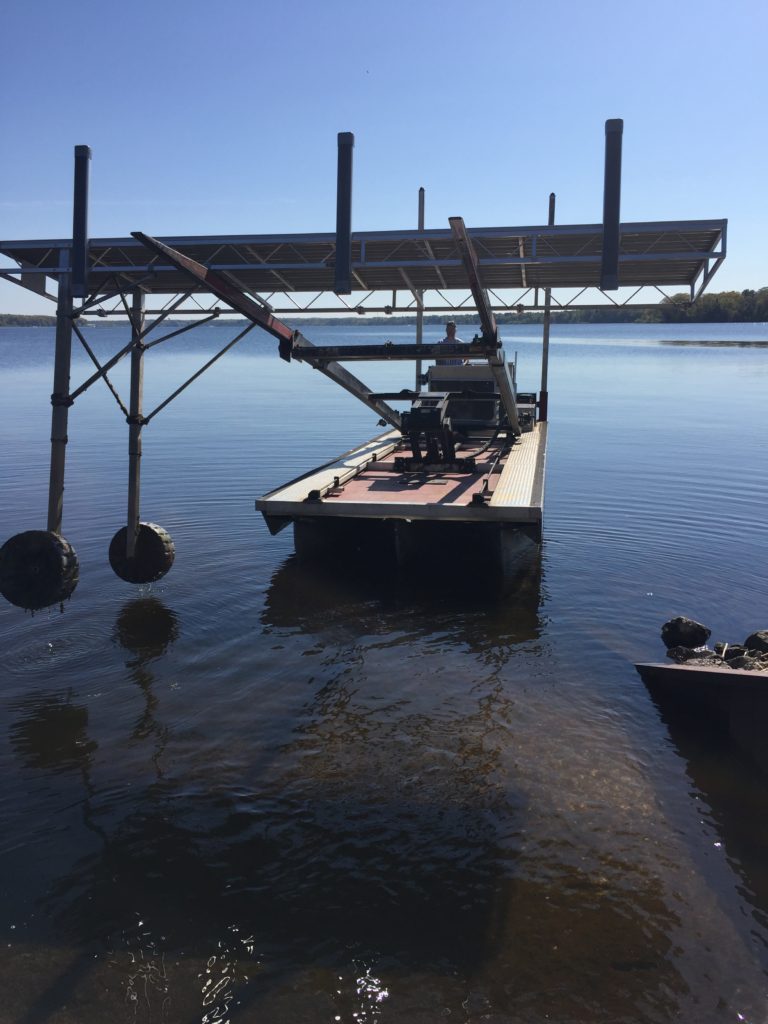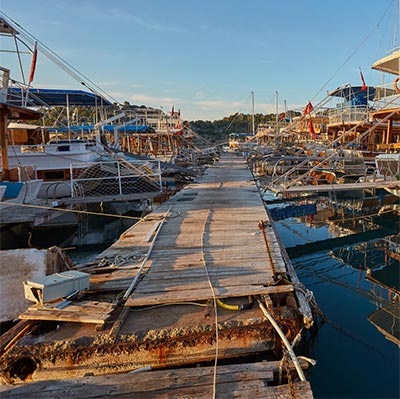How to Address Common Dock Repair Issues for Safe Water Activities

Identifying Common Dock Issues
Determining typical dock problems is essential for preserving the performance and safety of your waterside building. Routine inspections can help reveal problems prior to they come to be severe, making certain both the durability of the dock and the safety and security of those that use it.
An additional common problem is the degradation of flotation protection devices. These gadgets are essential for maintaining the dock buoyant, and any kind of damages or punctures can trigger the dock to checklist or sink. Frequently checking for leakages or water logged drifts can preempt extra considerable concerns.
In addition, algae and barnacle buildup on the dock's surface can develop harmful and unsafe conditions. This biofouling not only presents a danger to individuals yet can also accelerate the deterioration of the dock materials.
Last but not least, inspecting for indications of corrosion on steel parts is vital. Corrosion can compromise the integrity of the dock's framework, making it unsafe. By regularly recognizing these usual dock issues, you can make certain that your dock remains useful and secure for many years ahead.
Repairing Rotting Wood
When addressing the issue of decaying wood on your dock, it is crucial to act swiftly to stop more damage. Begin by extensively checking the whole structure to determine all impacted areas. Utilize a screwdriver to penetrate the timber; if it sinks in conveniently, the timber is most likely rotted and needs prompt focus.
Be sure to cut back to healthy, solid timber, ensuring you get rid of all endangered product. After removal, deal with the continuing to be wood with a wood chemical to protect against future rot.
Following, replace the gotten rid of areas with marine-grade lumber or pressure-treated timber, which are a lot more resistant to water damages. Protect the brand-new pieces with stainless-steel or galvanized bolts to avoid rust. Furthermore, applying a water-proof sealer to the new timber can supply an extra layer of defense.
Safeguarding Loose Boards
Just how do you ensure your dock continues to be useful and risk-free for all its users? One vital facet is securing loose boards, which can otherwise pose significant risks. Loosened boards not just raise the danger of stumbling yet can also jeopardize the architectural integrity of the whole dock.

For reinstallation, make use of stainless or galvanized steel screws, as these materials offer superior resistance to rust in aquatic settings. Make sure the screws are long enough to permeate deep right into the underlying support framework, however not so lengthy that they stick out via the dock's surface area. Pre-drilling pilot holes can assist prevent the wood from splitting.
Last but not least, keep a routine assessment routine to identify and try this out attend to any kind of new issues immediately. By securing loose boards successfully, you contribute to the overall safety and security and longevity of your dock, making it a trustworthy platform for water tasks.
Stabilizing Unstable Pilings
Making sure the stability of unstable pilings is critical to preserving a secure and useful dock. Use a level to inspect for upright alignment and ensure they are driven deep enough right into the substrate to offer ample assistance.
If the pilings are found to be unpredictable, one effective technique for reinforcement is making use of additional bracing. Cross-bracing with treated lumber or galvanized metal can dramatically boost stability. Anchor the dental braces securely to both the pilings and the dock structure to distribute tons uniformly.

Regular maintenance and periodic review of the pilings' stability are essential to making certain lasting dock security and functionality.
Changing Rusty Hardware
Dealing with unsteady pilings is simply one element of keeping a dock's stability; an additional important issue is changing corroded equipment. In time, direct exposure to moisture and salt can bring about the oxidation and deterioration of braces, screws, and screws, jeopardizing the entire structure's security. Normal assessment for corrosion is necessary, especially after severe climate or seasonal changes.
When webpage rustic equipment is determined, prompt action is required. Begin by picking marine-grade stainless steel or galvanized equipment, both made to withstand the extreme marine atmosphere. Make certain that you have the suitable devices, such as wrenches and screwdrivers, to securely get rid of the old, corroded items without causing further damages to the dock.
After eliminating the rusty hardware, extensively tidy the affected areas to get rid of any kind of recurring rust or debris. Apply a rust-inhibiting primer to revealed metal surfaces prior to mounting the new hardware. Tighten up all components firmly to protect against future loosening, and occasionally evaluate the installations to guarantee recurring stability.
Replacing rusty hardware not only expands the dock's lifespan but also dramatically improves the safety and security of water tasks. By proactively taking care of corrosion, you secure both the structure and its customers, guaranteeing a protected and delightful waterside experience.
Final Thought
Routine evaluations and maintenance are necessary to resolve usual dock repair service concerns and ensure safe water tasks. By recognizing and correcting problems such as decaying timber, loosened boards, unsteady pilings, and corroded equipment, architectural stability and longevity can be significantly improved. The application of proper therapies and marine-grade products even more fortifies the dock versus environmental try this site stressors. Such positive measures add to the general safety and security and capability of dock structures, fostering a safe and secure atmosphere for water-based activities.
Ensuring the security of water activities hinges significantly on the appropriate upkeep and repair work of anchors (Dock Repairs). These devices are necessary for keeping the dock buoyant, and any damages or punctures can trigger the dock to checklist or sink. By routinely recognizing these typical dock concerns, you can guarantee that your dock stays practical and safe and secure for years to come
Guaranteeing the security of unsteady pilings is paramount to preserving a functional and safe dock.Routine examinations and upkeep are important to resolve typical dock repair service concerns and ensure safe water tasks.